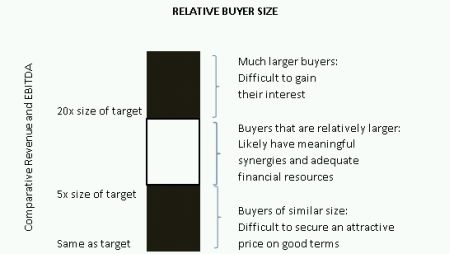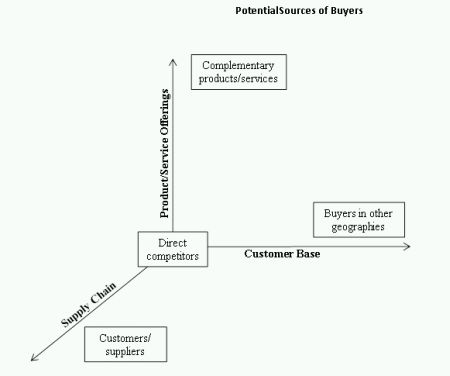The pharmaceutical regulatory field in Canada has seen a host of legislative and administrative developments in recent months. Many of the changes were introduced to provide Canada’s drug and health product watchdog, Health Canada, with greater powers to deal with public health risks associated with drugs and other health care products currently on the market or to be introduced to the market in the future. If you or your client manufactures, markets and/or sells pharmaceuticals (whether brand or generic), medical devices or other health care products in Canada, it is important to be apprised of two recent developments and their potential impact on your client’s business.
The first development is Health Canada’s revised guidance on the Look Alike Sound Alike policy for brand names for pharmaceuticals, released last month. Although the guidance clarifies the drug name approval process at Health Canada aimed at reducing medication errors, the revised process is more onerous on manufacturers and requires more detailed information to be provided to Health Canada. The second development is the enactment of Vanessa’s Law, which amends the Food and Drugs Act to give the Minister of Health expanded powers to assess the post-marketing safety risks of pharmaceuticals and medical devices and their associated advertising and marketing. This article examines the impact of both of these developments in the Canadian pharmaceutical regulatory field and recommends how best to brand and protect pharmaceuticals and medical devices in view of these changes.
- Drug Brand Guidance: Look Alike Sound Alike Policy
In Canada, the importance of a pharmaceutical’s brand name goes well beyond its role in a successful marketing campaign. It is one factor, amongst many, that Health Canada assesses as part of the comprehensive safety and efficacy review in the regulatory approval process.
In order to sell a drug on the Canadian market, the manufacturer (or “sponsor”) must obtain a Drug Identification Number (“DIN”) and a Notice of Compliance (“NOC”) for the product. The Food and Drug Regulations outline the requirements to obtain a DIN and NOC, and also mandate submissions concerning the safety implications associated with the proposed brand name for the product[1]:
(o) in the case of a new drug for human use, an assessment as to whether there is a likelihood that the new drug will be mistaken for any of the following products due to a resemblance between the brand name that is proposed to be used in respect of the new drug and the brand name, common name or proper name of any of those products:
(i) a drug in respect of which a drug identification number has been assigned,
(ii) a radiopharmaceutical…in respect of which a notice of compliance has been issued under section C.08.004 or C.08.004.01, and
(iii) a kit…in respect of which a notice of compliance has been issued under section C.08.004 or C.08.004.01.
If Health Canada determines that a proposed drug name has similarities and is likely to be confused for the brand name, common name or proper name of another health product, Health Canada has the discretion to refuse to issue a DIN or a NOC. Although the Food and Drug Regulations stipulate that an assessment of the potential causes of confusion must be conducted and submitted, nothing more is provided on the matter. To give direction, Health Canada introduced in 2006 an administrative statement of its policy on brand names for pharmaceuticals. The Guidance, formally called the “Guidance Document for Industry – Review of Drug Brand Names” but more commonly referred to as the “Look Alike Sound Alike” (“LASA”) Guidance was revised in July 2014.[2] On June 13, 2015, the revised LASA Guidance came into effect.
The LASA Guidance applies to proposed brands for drugs for human use (whether innovator or generic), including biologics, pharmaceutical prescription drugs, radiopharmaceuticals, kits, drugs sold directly to professionals for professional use (e.g., anaesthetics), and drugs sold to the public with the intervention of a healthcare professional (e.g., insulin). The Guidance currently does not apply to submissions for non-prescription over-the-counter drug products or natural health products, but Health Canada expects to produce brand name assessment guidelines for these products in the future.
The purpose and aim of the LASA Guidance is to prevent medication errors resulting from misleading or confusing product names. Medication errors related to confusing names can occur at several points along the path from prescriber to patient, including: prescribing errors, transcription errors, dispensing errors, administration errors and self-selection errors. The result of these errors is that the patient receives the wrong medication potentially depriving them of the intended therapeutic benefit, or resulting in serious harm from contraindications or adverse effects.
The revised LASA Guidance provides sponsors with direction on the processes to be followed and information to be submitted to Health Canada as part of the brand name assessment. Although the revised Guidance is more onerous than in the past and requires more detailed information, it is essential that the sponsors comply with Health Canada’s requirements since failure to satisfy the naming requirements will bar regulatory approval.
- Assessment by Health Canada of Brand Name
The first step of the brand name review process outlined in the LASA Guidance is an Initial Brand Name Review, which is conducted by Health Canada, not the manufacturer/sponsor. However, it is recommended that sponsors review the criteria for the Review prior to conducting the assessment of the proposed brand name to Health Canada. There are seven factors that are considered:
- Does the name/modifier suggest/imply an unsubstantiated unique effectiveness/composition, superiority claims, exaggerated product efficacy, broadening product indication or minimizing the risk of the product (e.g., making superiority claims such as ‘CureAll’)?
- Does the name/modifier include or imply an ingredient that is not included in the drug product?
- Is the name identical to an authorized product in Canada containing a different medicinal ingredient(s) (e.g., ‘Podium’ contains the medicinal ingredients ‘XY’ and a sponsor proposes the identical name ‘Podium’ for medicinal ingredient ‘Z’)?
- Does the proposed name contain a letter sequence/stem that is in the same position designated by USAN (U.S. Adopted Name) or INN (International Nonproprietary Name) for the same or different pharmacological/chemical trait?6,7,8
- Does the proposed brand name contain or suggest an exclusive composition of only one ingredient in a multi-ingredient product?
- Does the name suggest an unsupported route of administration or dosage form?
- Does the name conflict with Schedule A of the Food and Drugs Act[3] (e.g., DiabeticCareTM Acetaminophen Tablets)?
An affirmative response to any of the above questions will result in an automatic rejection of the proposed name. Additional factors are considered by Health Canada, however they will not result in an automatic rejection. These include, for example, whether the proposed brand name is the same or similar to a name for a product no longer on the market, or whether part of the proposed brand name represents or implies a medical or scientific term or acronym.
(b) Assessment by Sponsor of Brand Name
If the proposed name passes the Initial Brand Name Review, the sponsor is required to conduct a LASA brand name assessment. This assessment is the responsibility of the sponsor to conduct. It is a comprehensive, multi-step review of the proposed brand name which assesses the likelihood that the proposed brand name will be confusing with the names of approved drug products. The process consists of three steps: search, simulate, and synthesize.
i) Search
This first step involves a search of the Drug Product Database[4] and the Licenced Natural Health Products Database.[5] The search query will compare the proposed name against the database according to orthographic and phonetic similarities. Results of the searches are listed according to a computed similarity score and results scoring 50% of higher are to be included in the sponsor’s submissions to Health Canada. If the proposed brand name is already marketed in another country, addition searches are required. For sponsors considering a potential brand name, it is important to search the Drug Submission Tracking System for pending submissions.
ii) Simulate
The simulate step consists of simulation experiments to assess the confusability of the proposed name by using the name in a variety of prescribing, transcribing, dispensing and administration scenarios. The sponsor must consider the world in which the drug associated with the proposed brand name will exist and conduct simulations against this. For example, the drug may be used in the hospital setting, therefore the sponsor must detail every step of the process by which the drug gets to patient and conduct simulations against this. Some drugs would have more complicated routes than others (e.g., oral prescription drug vs. drug for injection by emergency physician) or have multiple routes (e.g., oral prescription drug in hospital and community). The sponsor must conduct at least five simulations, which altogether, involve at least one hundred healthcare professionals.
iii) Synthesize
The sponsor’s final step in the LASA assessment is to synthesize the results from the search and simulate steps by completing a failure mode and effects analysis (“FMEA”). As a preliminary step, the sponsor must consider the names generated in the search and simulate steps for their inclusion or exclusion from the FMEA. The sponsor must then provide rationale for the inclusion or exclusion of each name.
The FMEA is an analysis conducted by a panel of various health care professionals, each representing an individual who would be involved in the delivery of the drug at issue. The panel considers the drugs names from the search and simulate steps that were included by the sponsor against the process maps developed in the simulate step. The principal consideration is determining what can go wrong in the case of a medication error (i.e. failure modes) and the effects. The FMEA panel is also required to answer various questions addressing the effects of the potential confusing drugs, the effects of omitting the proposed drug, the effects of administering the wrong drug therapy, and the effects of combined drug therapy.
Once the results of the complete LASA assessment are submitted to Health Canada, it will review the submissions and decide on the acceptability of the proposed name. Health Canada can request further information or material (including raw data) or make its own inquiries. If a proposed drug brand name is rejected by Health Canada, the sponsor can submit an alternative name for review[6], use the proper/common name alone, or seek to formally reconsider the decision of Health Canada if it results in a withdrawal notice.
Given the more stringent and involved brand name approval process in Canada, it is recommended that innovator and generic companies consider the LASA Guidance well in advance, and preferably at the time of choosing and clearing a brand, in order to avoid unnecessary delays or unfavourable results. It is also recommended that pharmaceutical companies that perform global development and testing processes with respect to proposed brand names include Canadian respondents and give consideration of the use of the product in Canada. Otherwise Health Canada is unlikely to consider (or give sufficient weight) to the brand name assessment completed in another jurisdiction. Alternatively, the sponsor may be asked to conduct an additional assessment to reflect the Canadian context, which both delays the approval process and incurs more expense. Sponsors should also have regard to non-name attributes, such as formulation, strength and indication, when considering the use of a performance study from another jurisdiction for the purposes of the Canadian brand name approval process.
- Vanessa’s Law – Increased Oversight of Drugs and Medical Devices
The second key development in Canada is the Protecting Canadians from Unsafe Drugs Act (Vanessa’s Law), which received Royal Assent in November 2014, but has not yet come into force. Through amendments to the Food and Drugs Act, Vanessa’s Law aims to further protect the Canadian public from the risk of injury from “therapeutic products” (defined as a drug, device, or any combination of drugs and devices) currently on the market. Overall, the law provides the Minister of Health with greater powers to assess and manage risks associated with drugs and medical devices. Much debate around Vanessa’s Law concerns the newly created powers of the Minister to compel any information from sponsors (including confidential business information, which is defined to include information that has actual or potential economic value to competitors, or the disclosure of which would result in material financial loss) and the power to disclose the confidential business information without notice to, or consent from the person to whose business or affairs the information relates. Although these powers are to be employed only where a drug or device “may present a serious risk of injury to human health”, the potentially far-reaching and invasive nature of the amendments are controversial.
Vanessa’s Law will also impact the marketing and oversight of already approved pharmaceutical drugs and devices. First, where the Minister believes it is necessary to prevent injury to health, he or she may compel the sponsor to modify or replace the label or packing of a drug or device. Second, the Minister may order a sponsor to conduct an assessment of the drug or device’s effects on health and safety. While the latter change does not specifically mention the effects of the product’s brand name, this is well-known to be an important aspect of Health Canada’s safety analysis (as described in the LASA Guidance) and is likely encompassed by these new provisions. The Minister may also recall the drug or device at issue in order to respond to a serious or imminent health risk, or seek an injunction. Furthermore, the penalties for contravention of the new provisions can be severe, resulting in some cases in fines up to $5,000,000 and imprisonment for those who contravene the Food and Drugs Act (including Minister’s orders under Vanessa’s Law).
To assist with the implementation of Vanessa’s Law, Health Canada recently released a draft guide titled “Amendments to the Food and Drugs Act: Guide to New Authorities (power to require and disclose information, power to order a label change and power to order a recall) seeking comments.[7] The guide sets out principles to govern all decisions by Health Canada, and covers when, how, and what triggers the Minister’s ability to make use of the powers and explains to whom the powers apply. The guide also contains a non-exhaustive list of elements that should be considered as the starting point for making a determination of “serious risk” of injury.
Conclusion
Successful branding of pharmaceutical products must consider the target audiences (patients, doctors, pharmacists), the associated therapeutic and disease awareness, and the global market in order to achieve greater market share and brand loyalty. Increasingly, the proposed brands of drugs and other health care products are subject to heightened government regulation. This is demonstrated by the recent regulatory changes in Canada, including Health Canada’s stringent new requirements and information disclosure relating to new drug names. As a result, manufacturers must be strategic when it comes to branding and have regard to both the regulatory approval process and the trademark registration process globally, especially in the key jurisdictions. Although the proposed drug name must pass Health Canada’s scrutiny to be used in the marketplace, the review by Health Canada does not grant positive rights to the pharmaceutical manufacturer to stop others who may be using a similar brand name. Therefore pharmaceutical branding must be considered strategically from all angles, including with reference to the recent changes in Canada, starting at an early stage of the brand selection and clearance process. This will ensure timely and successful approval and entry into the market and thereafter.
[1] Food and Drug Regulations, CRC c 870, C.08.002(1)(o).
[2] http://www.hc-sc.gc.ca/dhp-mps/pubs/medeff/_guide/2014-review-examen_drug-medicament_names-marques/index-eng.php
[3] In Canada there are certain diseases, disorders and abnormal physical states for which a food, drug, cosmetic or device cannot be advertised and sold to the public as a treatment, preventative or cure for. Schedule A of the Food and Drugs Act lists the prohibited diseases, disorders and abnormal physical states.
[4] Available from: http://webprod5.hc-sc.gc.ca/dpd-bdpp/index-eng.jsp
[5] Available from: http://webprod3.hc-sc.gc.ca/lnhpd-bdpsnh/
[6] A sponsor may submit two brand names for submissions of 180 days or longer.
[7] http://www.hc-sc.gc.ca/dhp-mps/consultation/drug-medic/unsafedrugsact-guide-lesdroguesdangereuses-eng.php





